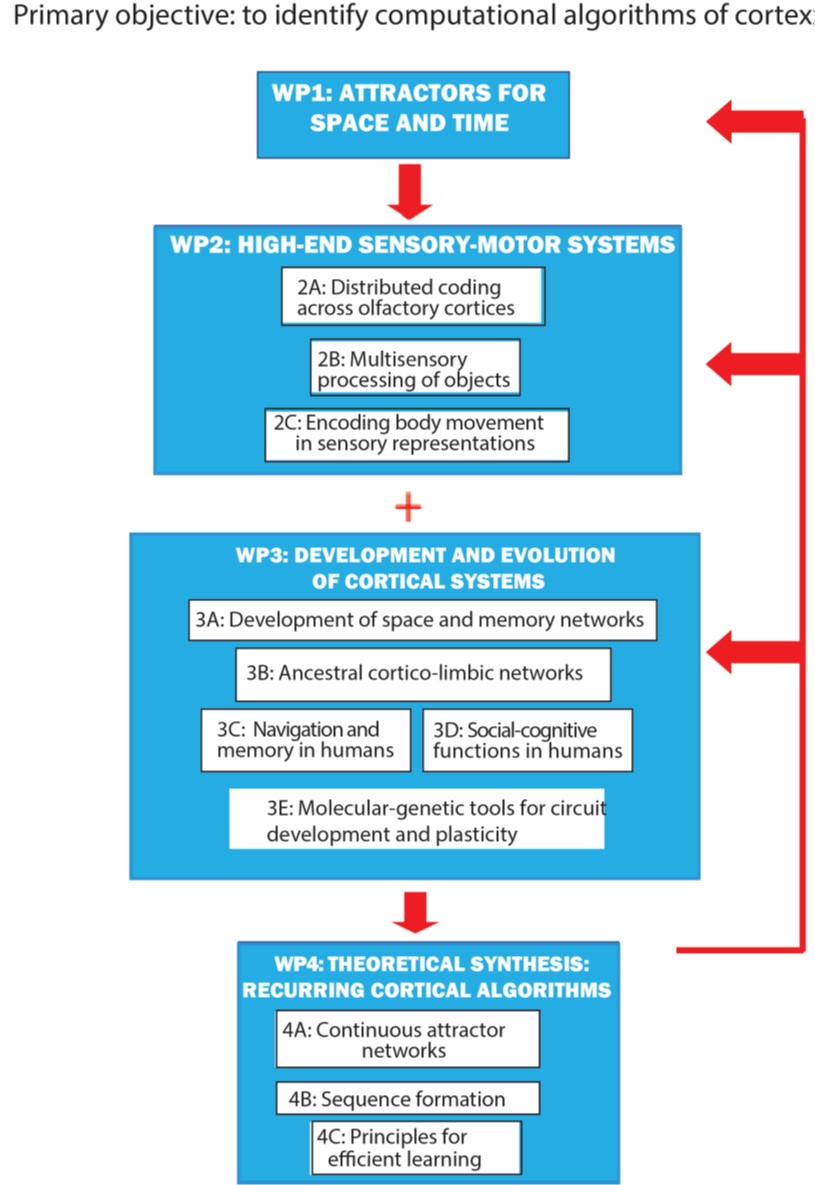CAC WP1: Attractors for space and time - Kavli Institute for Systems Neuroscience
WP1: Attractor dynamics for space and time
Continuous attractor network (CAN) models are among a very small number of theories in systems neuroscience with precise predictions about connectivity and collective dynamics of brain circuits. Their status, in terms of validation, can be compared to that of black holes in cosmology, which were inferred from astronomical data but for which verification by direct observation long remained lacking. A targeted experimental effort recently led to the visualisation of a black hole, validating theories dating back to the mid-1900s and before, and enabling comparison with theoretical predictions. We shall achieve the same for CAN models.
Motivation
We will use the entorhinal-hippocampal (EC-HPC) region, and large-scale population recording, as access ramp for a first direct test of CAN models for spatial coding, starting with grid and head direction cells.
Aims
We will use new methods to test hypotheses of CAN models directly for grid and head direction cells and determine how CAN algorithms are implemented in MEC circuits.
Implementation
Using neuropixels probes and 2P miniscopes, we will record simultaneously from 1000s of EC-HPC cells in freely moving rats or mice and infer dimensionality and topology of the population activity.

